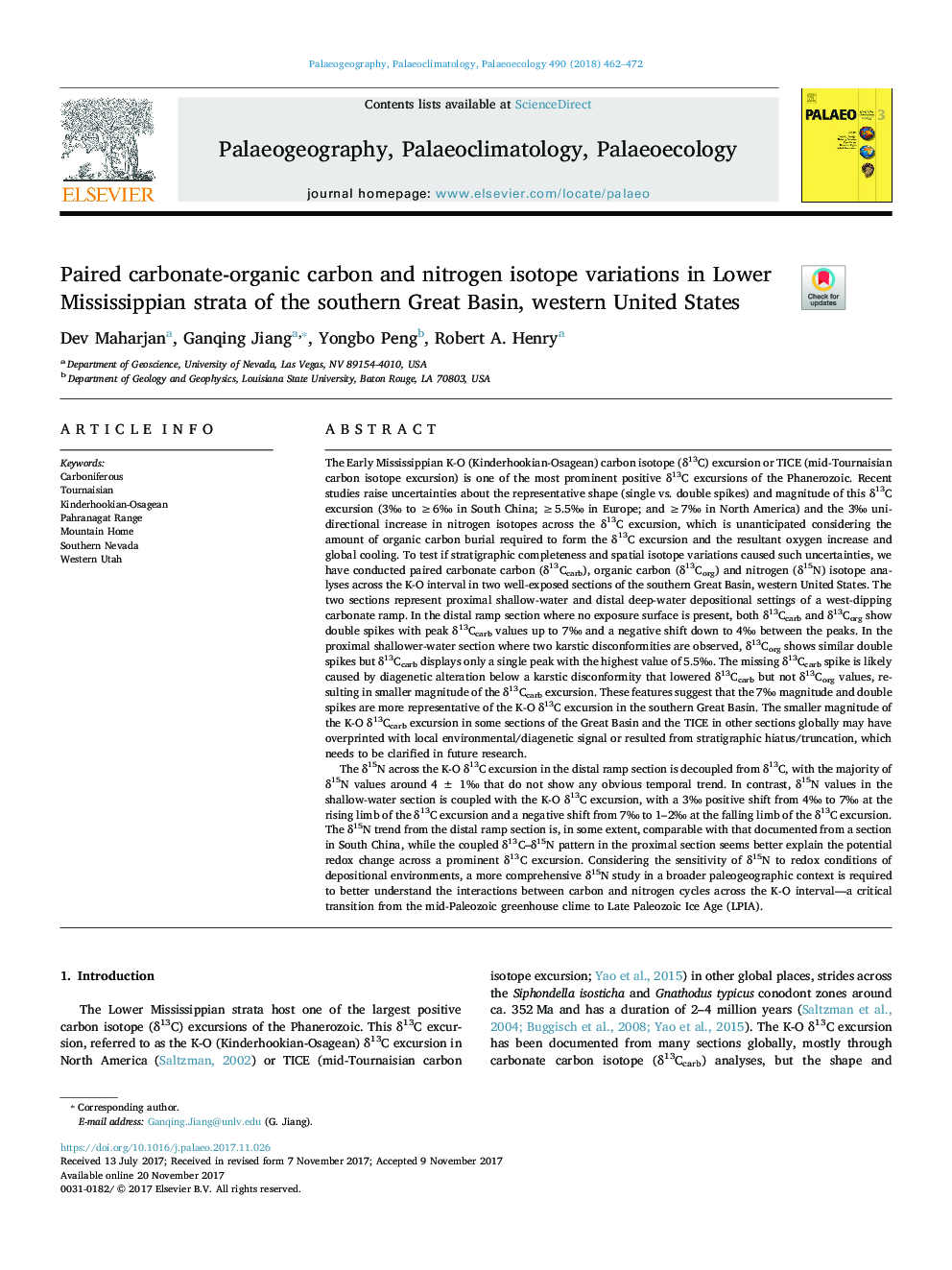| Article ID | Journal | Published Year | Pages | File Type |
|---|---|---|---|---|
| 8868470 | Palaeogeography, Palaeoclimatology, Palaeoecology | 2018 | 11 Pages |
Abstract
The δ15N across the K-O δ13C excursion in the distal ramp section is decoupled from δ13C, with the majority of δ15N values around 4 ± 1Ⱐthat do not show any obvious temporal trend. In contrast, δ15N values in the shallow-water section is coupled with the K-O δ13C excursion, with a 3Ⱐpositive shift from 4Ⱐto 7Ⱐat the rising limb of the δ13C excursion and a negative shift from 7Ⱐto 1-2Ⱐat the falling limb of the δ13C excursion. The δ15N trend from the distal ramp section is, in some extent, comparable with that documented from a section in South China, while the coupled δ13C-δ15N pattern in the proximal section seems better explain the potential redox change across a prominent δ13C excursion. Considering the sensitivity of δ15N to redox conditions of depositional environments, a more comprehensive δ15N study in a broader paleogeographic context is required to better understand the interactions between carbon and nitrogen cycles across the K-O interval-a critical transition from the mid-Paleozoic greenhouse clime to Late Paleozoic Ice Age (LPIA).
Keywords
Related Topics
Physical Sciences and Engineering
Earth and Planetary Sciences
Earth-Surface Processes
Authors
Dev Maharjan, Ganqing Jiang, Yongbo Peng, Robert A. Henry,
